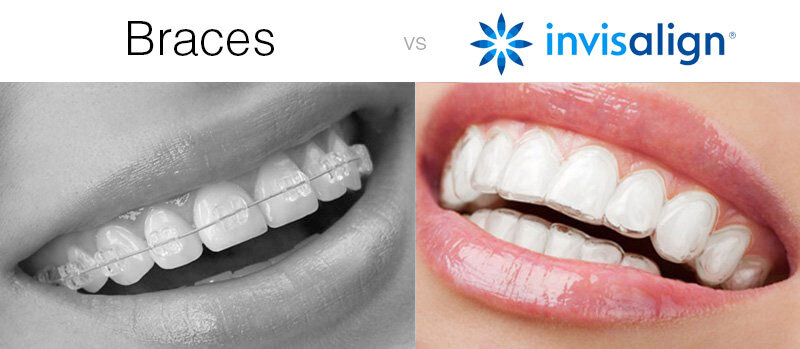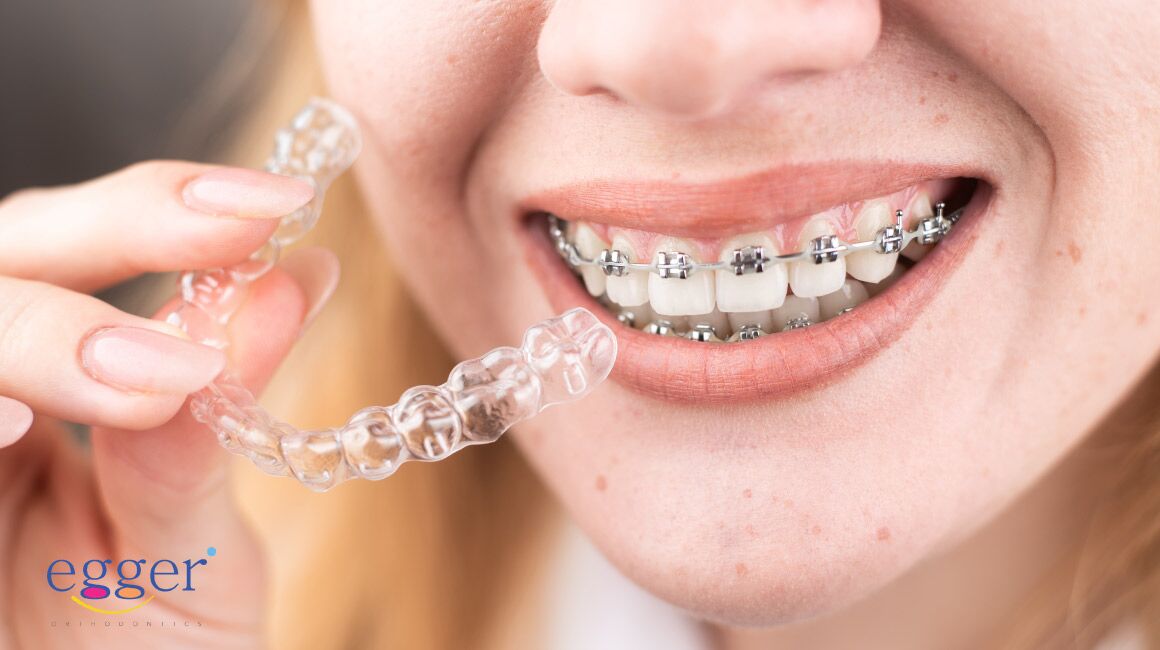Leading Factors to Choose Invisalign Over Other Orthodontic Treatments
Leading Factors to Choose Invisalign Over Other Orthodontic Treatments
Blog Article
Invisalign vs. Standard Braces: Which Choice Is Right for You?
When taking into consideration orthodontic therapy, the selection between Invisalign and typical dental braces provides numerous vital aspects that merit mindful examination. Invisalign supplies a very discreet option with detachable aligners, while standard braces offer an extra noticeable yet effective solution for serious misalignment.
Introduction of Therapy Choices

In contrast, typical dental braces include steel brackets and cords that are bonded to the teeth. This approach applies continuous pressure over time to accomplish placement. While efficient for complicated orthodontic problems, typical dental braces call for regular gos to for changes and can present difficulties in maintaining oral hygiene due to the difficulty of cleaning up about brackets and cords.
Both options have their values, and the selection frequently rests on particular oral problems, way of living preferences, and individual conformity. Eventually, getting in touch with an orthodontic professional is important for identifying the most ideal therapy plan customized to specific requirements. Recognizing the subtleties of each option can substantially influence the total success of orthodontic therapy.
Visual Factors To Consider
A substantial aspect affecting the selection between Invisalign and typical braces is the visual charm each treatment provides. Invisalign aligners are crafted from clear plastic, making them practically invisible when worn. This very discreet appearance is especially attracting grownups and teens that might really feel uneasy about their orthodontic treatment. The ability to preserve a natural smile throughout the placement process can significantly improve the client's self-confidence in specialist and social setups.
In comparison, traditional braces include metal brackets and wires, which can be a lot more visible. While improvements in orthodontic innovation have brought about the growth of smaller brackets and tinted elastics, typical braces still keep a more obvious profile. For some people, the visibility of braces may deter them from seeking essential treatment.
Ultimately, the selection in between Invisalign and conventional dental braces might rest on personal choices pertaining to appearances. Patients that focus on discretion commonly favor Invisalign, while those who are less concerned concerning visibility may opt for traditional braces. Comprehending the aesthetic effects of each choice is crucial for making an informed choice that aligns with one's way of life and choices.
Comfort and Convenience

In regards to benefit, Invisalign aligners are removable, allowing patients to enjoy their favorite foods without constraint and preserve optimal dental hygiene. Brushing and flossing are streamlined, as the aligners can be taken out during these regimens, whereas traditional dental braces need mindful navigating around cords and brackets.
Additionally, Invisalign's dynamic system enables fewer orthodontic check outs. Patients typically obtain numerous collections of aligners at the same time, which can simplify the treatment process and lower time spent in the orthodontist's chair. On the other hand, standard braces necessitate routine changes, making them much less convenient for those with hectic schedules. Invisalign. Overall, the convenience and comfort of Invisalign make it an enticing choice for lots of people looking for orthodontic therapy.
Treatment Period and Efficiency
While both Invisalign and traditional dental braces are reliable in fixing oral look at here misalignments, the period of treatment can helpful hints vary significantly in between the 2 alternatives. Normally, Invisalign therapy can take anywhere from 12 to 18 months, depending on the intricacy of the situation. The clear aligners work by gradually changing teeth right into their desired positions, and routine follow-ups with an orthodontist aid guarantee progression remains on course.
In comparison, typical dental braces frequently require a longer dedication, generally ranging from 18 months to 3 years. This results from their set nature and the usage of cords and braces, which can be more effective for severe misalignments and intricate cases (Invisalign). The treatment effectiveness of conventional braces is well-documented, as they allow for precise changes and greater control over tooth movement
Inevitably, the option in between Invisalign and typical braces might hinge on both the awaited therapy duration and the particular dental concerns available. Consulting with an orthodontist is essential, as they can provide tailored suggestions based upon specific demands, guaranteeing the picked method aligns with preferred results and durations.
Price Contrast and Insurance Policy Choices
Cost plays a substantial role in the decision-making procedure for people taking into consideration orthodontic therapy, whether choosing for Invisalign or standard braces. Generally, the price of Invisalign arrays from $3,000 to $8,000, while standard dental braces normally cost in between $2,000 and $6,000. Factors affecting these costs include the intricacy of the case, the period of therapy, and geographical location.
Many oral insurance coverage strategies provide partial insurance coverage for orthodontic therapies, but the specifics can differ extensively. Usually, conventional dental braces might be a lot more often covered by insurance policy plans contrasted to Invisalign, which some insurance providers categorize as a cosmetic procedure.
Furthermore, numerous orthodontic methods supply flexible layaway plan, making both therapy alternatives much more available. Clients should ask about possible financing choices and discounts for ahead of time settlements. Assessing the total cost, consisting of insurance advantages and repayment plans, is vital for making an informed choice that straightens with both aesthetic preferences and budget factors to consider.

Final Thought
In summary, the option between Invisalign and conventional braces hinges on numerous factors, consisting of visual additional resources choices, convenience, treatment duration, and cost. Invisalign offers a discreet, removable option that helps with oral hygiene and nutritional adaptability, while standard dental braces may be preferable for intricate dental concerns and usually come with a lower price factor. Eventually, examination with an orthodontist is vital to assess specific scenarios and identify the most suitable treatment choice for accomplishing optimum oral placement.
When taking into consideration orthodontic treatment, the option in between Invisalign and conventional braces offers a number of important factors that merit cautious examination.Comparing Invisalign and typical dental braces exposes unique therapy alternatives for orthodontic improvement.While both Invisalign and standard braces are effective in dealing with dental imbalances, the period of treatment can differ substantially between the 2 alternatives.Price plays a considerable role in the decision-making process for people thinking about orthodontic therapy, whether opting for Invisalign or standard dental braces.In summary, the selection in between Invisalign and standard braces pivots on several factors, including visual preferences, convenience, therapy duration, and price.
Report this page